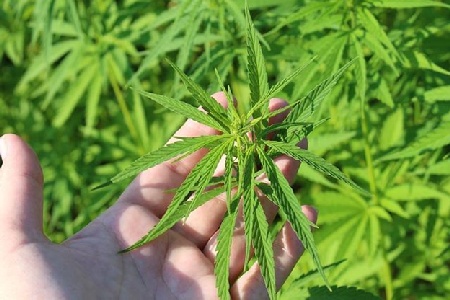Weed is one of the oldest plants people have grown throughout human history. Our ancestors used cannabis for different reasons, such as medicine, oil production, fiber, and even as a food additive. Cannabis has two different species, namely Indica and Sativa. This post focuses on Sativa plants and how they impact the cannabis industry.
Our discussion shall primarily focus on the industry’s medical wing of the cannabis sector. Keep reading to discover more about Sativa’s role in promoting the cannabis industry.
What Is Sativa?
First, it’s necessary to define
Cannabis Sativa and differentiate it from Indica. Sativa is a cannabis category originating from the world’s warmer climates like South America, Central America, and Southeast Asia. While Indicas and Sativas have the same chemical composition, they differ in the extent to which these elements affect users. However, there’s no noticeable difference in CBD levels in Sativa and Indica hemp plants.
The general belief is that Sativas provide a more energizing and creative effect than Indicas. Others believe this variety is more helpful for people with nausea, poor appetite, headaches, and depression. Unlike Indicas, Sativa plants usually contain more THC than CBD. However, other
scientific research works don’t find such a huge difference and claim that some Sativa plants are more energizing than others.
So, where does this classification come from? We can trace the Sativa and Indica classification from
Carl Linnaeus’s works published in 1753 and Jean-Baptiste’s discovery in 1785. Linnaeus classified all cannabis plants as “Cannabis Sativa L.” Cannabis is the genus, Sativa is the species, and L is the Linnaeus classification system. Sativa comes from the Latin word “sativum,” which means “cultivated.”
A French biologist Jean-Baptiste Lamarck upgraded the classification in 1785 and created two other categories. The first is the “Sativa,” which appears more fibrous, lankier, and taller. Indica is the shorter, stouter, and more psychoactive category. The name Indica in Latin means “from India” because the plant is believed to have originated from the Indian subcontinent.
Sativas originally grew in warm, humid climates. They become long and thin; thus, they can dry out without absorbing excess humidity. Growing in warmer climates means the plants take more time to develop and blossom. Such climatic conditions are characterized by higher temperatures and less rain as the plants’ growing season ends. Check more valuable information about
Cannabis sativa seeds at Askgrowers.com and learn how to grow Sativa in your setup.
Sativa Health Benefits
Let’s underscore that there can be no cannabis industry without cannabis, in which Sativas are key players. The cannabis sector is thriving despite all the generational indoctrination that demonized the plant. The general misconception focused on scaring people away from the plant’s abuse without showing them its original use.
The plant’s undisputable medicinal and wellness benefits are some of the industry’s main selling and excelling points. People want to be healthy before enjoying other life benefits, including cannabis’s benefits. This awareness has opened the gates for scientific research to reach the core of weed’s health and medicinal value.
As stated earlier, there’s no essential difference between Sativas and Indicas. Their main differences are usually external, and any internal dissimilarities are the extent to which a Sativa strain excels in a given benefit or function. Below are the main therapeutic properties of Sativa.
- Regulates and prevents diabetes. Cannabis regulates diabetes management and prevents the disease’s worsening by regulating insulin. Sativas can stabilize blood sugar, lower blood pressure, and boost blood circulation.
- Helps treat depression. Depression is a big health challenge facing the modern generation. The tough economic times people live in drive millions into depression, knowingly and unknowingly. Thankfully, the endocannabinoid in cannabis stabilizes moods, easing depression.
- Relieves chronic pain. Chronic pain is one of the main causes of disability, affecting over 25 million adult Americans. Cannabis relieves chronic pain. The National Academies of Sciences, Engineering, and Medicine conducted an extensive review assessing over 10,000 scientific studies to establish cannabis’s medical power and side effects, and pain relief was one of the best-documented properties. Its findings proved that cannabis’s ingredients act on the brain’s receptors that relieve chronic pain.
- Aids in inflammatory bowel disease treatment. People who have Crohn’s disease or ulcerative colitis can benefit from cannabis’s relieving power. Sativa’s THC and cannabinoids enhance the immune response while interacting with cells that control gut function. Sativa’s power blocks off bacteria that inflame the intestines. Moreover, a recent study discovered that CBD and other non-psychoactive cannabinoids prevent and treat GI disorders. These disorders include irritable bowel syndrome (IBS), inflammatory bowel disease (IBD), and ulcerative colitis.
- Fights cancer. Oral cannabinoids fight and relieve vomiting and other nausea symptoms chemotherapy cause. Additionally, cannabinoids slow down cancer cell growth and kill them in some forms of cancer.
- Manages epilepsy. Epilepsy is another area cannabis helps with. Researchers have produced several anti-epileptic remedies containing cannabis components. No wonder in June 2018, the Food and Drug Administration (FDA) approved using an epileptic CBD-containing drug called Epidiolex. The medicine effectively treats two rare, severe types of epilepsy traditional medications can’t treat: Lennox-Gastaut syndrome and Dravet syndrome.
CBD is a major active cannabis ingredient, and it’s highly tolerable and safe to use because it doesn’t make users “high.” The above medication comes from a purified CBD form. The FDA approved the medication based on research and clinical trial findings. Moreover, a 2017
study discovered that CBD use in epilepsy drugs produced fewer seizures among children with Dravet syndrome than those with a placebo.

- Reduces hepatitis C side effects. Hepatitis C treatment causes many adverse side effects, including muscle pain, depression, fatigue, and nausea. Moreover, these adverse reactions can last for months among some hepatitis C patients. The good news is that cannabis reduces these side effects and makes treatment more effective.
- Lowers blood pressure. High blood pressure is another major lifestyle challenge facing millions of Americans. Fortunately, cannabis can help lower it. A 2017 JCI Insight study discovered that CBD reduced blood pressure. It lowered the participants’ pressure before and after undergoing stress tests. The tests they underwent included mental arithmetic, isometric exercises, and cold pressor tests.
- Promotes bone repair. Bone health is crucial to everyone, but some people are more vulnerable to bone disease than others. For example, women aged 50 years and above are more exposed to various bone diseases than younger ones. That means bone repair during this age bracket is more challenging than during earlier years. Fortunately, cannabis helps heal broken bones and hastens healing. The Bone Research Laboratory in Tel Aviv says cannabis strengthens bones during healing processes. Besides, this strengthening makes bones tough enough to withstand future breakage.
- Retards Alzheimer’s disease progression. Cognitive degeneration is common among older people. This degeneration causes Alzheimer’s disease. Fortunately, our elderly population have something to smile about because cannabis endocannabinoids contain anti-inflammation ability that fights the brain inflammation that causes Alzheimer’s disease.
Conclusion
Health and wellness lie at the cannabis industry’s heart. It’s one of the cannabis industry’s most flourishing and promising wings because people’s wellness is invaluable. Sativa plants significantly help medical cannabis consumers get the best this plant offers.
We focused on some of Sativa’s health and wellness benefits as one of its contributions to the cannabis industry. The ball is in your court to use this information to make an informed consumer decision and benefit from cannabis’s immense medicinal potential.
The material was prepared by Tia Moskalenko, an expert in cannabis and a regular contributor to the AskGrowers blog. Tia keeps an eye open for all cannabis industry innovations and technology of cannabis manufacturing to share her insightful observations and use tips with her readers. She believes in the vast and promising potential of weed and contributes to this industry’s development through consumer education.


 ☰
☰

